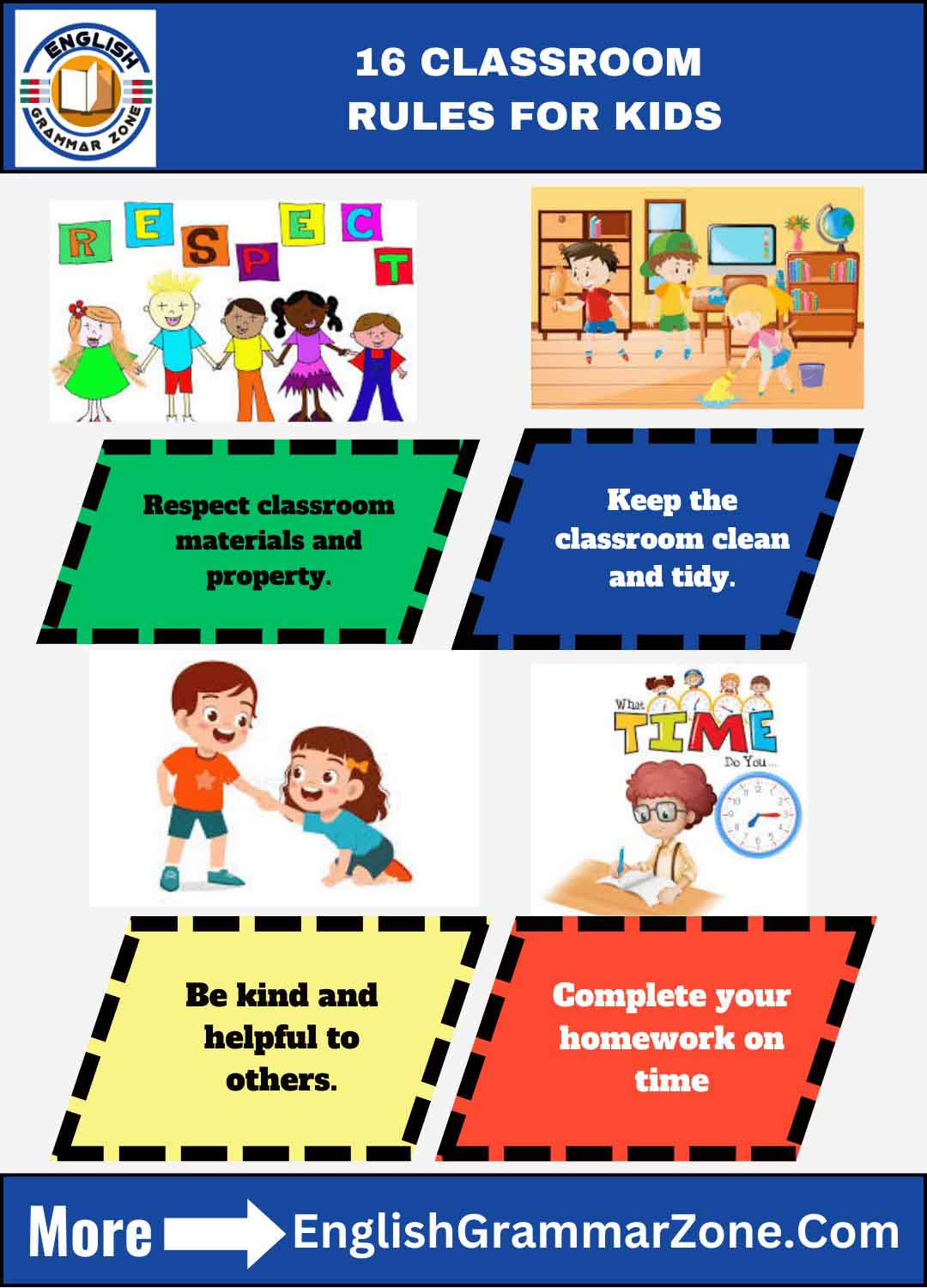Read on for helpful classroom rules for kids to create a structured environment to support learning. Find out how clear expectations promote positive student behavior, support respect and enable cooperation in the classroom.
16 classroom rules for kids:
- Raise your hand to speak.
- Listen when others are speaking.
- Follow directions the first time they are given.
- Keep your hands and feet to yourself.
- Be respectful to classmates and teachers.
- Always try your best.
- Be on time and prepared for class.
- Use quiet voices inside the classroom.
- Respect classroom materials and property.
- Stay in your assigned seat unless given permission to move.
- Keep the classroom clean and tidy.
- Be kind and helpful to others.
- Keep all electronic devices turned off during class.
- Complete your homework on time.
- Always use polite language and manners.
- Be honest and trustworthy.

Rules In A Classroom: Making An Ideal Accessible Learning Atmosphere
Setting clear and simple rules for kids in a classroom is important to have a positive and productive learning environment. Providing these rules allows the students to know how they should behave. You can do this to promote respect, responsibility, and cooperation in the classroom, which can help the learning process go more smoothly for teachers as well as children.
Importance of Classroom Rules
There are many reasons why classroom rules for kids are important. To begin with, they provide a comfortable environment in which their students can learn without any distractions. When students know which behaviors are acceptable, they are less likely to act out. Clear rules also provide children with an opportunity to practice important life skills such as following directions, cooperating, and being responsible for their actions.
In addition, rules for kids will maintain the discipline of the classroom. When guidelines are clearly established, teachers can focus on teaching rather than on managing behavioral challenges. Establishing rules can also create a sense of mutual respect and give students a clear understanding of treating their peers with kindness and fairness.
Examples of Good Classroom Rules for Children
- Respect Each Other: Students must be instructed to show respect to one another, their teachers, and classroom materials. A harmonious learning environment is a result of respect.
- Raise Your Hand to Speak: By this rule, every child must raise their hand to speak, ensuring that we all get a chance to be heard. This also avoids chaos and calms conversations.
- Consequence: Teaching kids to follow directions quickly and carefully helps to avoid disruption in the classroom.
- Encourage Collaboration: Teamwork and encourage learning among students. This rule is useful for group activities and projects.
- Be Responsible — Kids should be responsible for their actions, be it work or behavior. This principle allows students to take ownership of their education.
- Be Ready: be prepared for class with all of your materials and ready to learn.
- Stay on Task: Students should focus on their work and avoid distractions to make the most out of class time.
Additional Tips for Implementing classroom rules for kids
- Keep Rules and Expectations Simple and Positive: Use language that is clear and positive, which also helps children to understand what is expected of them. Instead of something like “Don’t talk when I’m talking,” say, “Listen when others are speaking.”
- Include Kids in the Rule-Making Process: Kids are more likely to abide by rules if they help decide what they are. Discussing what rules are important to your class.
- Model the Rules: Show your students the behaviors that you want them to exhibit. Set an example of respect, responsibility, and working collaboratively.
- USE VISUAL AIDS — Keep rules posted in a visible location in the classroom. Using visual cues can help carry the rules into the next day.
- Be Consistent: You must learn how to be consistent to control the classroom. Establish rules that apply to all students and implement them consistently.
Clear classroom rules for kids also help teachers have an environment where students feel they are in a place safe and respected to learn. When done appropriately, these rules can serve as foremost pathways to establishing good behavior outside of school as well.
Conclusion
And, implementing classroom rules for kids helps to set a clear code of conduct and expectations. When rules are enforced consistently as a construct, students feel safer, and thus are able to better centre their focus on the study at hand. An environment that is rooted in respect, collaboration, and responsibility is advantageous for teachers and students alike; it is the very bedrock of a productive classroom culture. Implementing basic yet impactful classroom policy for young people, teachers can cultivate the ideal atmosphere for learning and foster good behaviors.